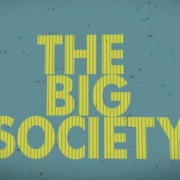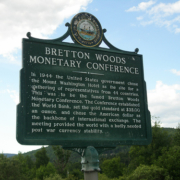If you are interested in monetary theory and what the Austrian School has to say about this debate, the paper that Anthony linked to last week is well worth reading. It addresses some common misunderstandings about Monetary Equilibrium Theory (MET).
This theory is controversial and is much critiqued in Austrian circles. It is but one branch of two very clear conceptions of money developed by Austrian School theorists past and present. Both concern the Theory of Free Banking, with MET supporters favouring Fractional Reserve Free Banking and the rest of the Austrians favouring Full Reserve Banking. It may seem a mystery why people so philosophically aligned come up with very different final policy conclusions. Both support the absence of the State in the banking architecture, preferring a free market for banks, but due to differences in definitions and monetary theory, they disagree about the ground rules for the market.
S Horwitz is a key developer of the MET School and A Evans (H&E) is clearly sympathetic. P Bagus and D Howden (B&H) are for the Full Reserve policy solution. As a side note, Selgin and White from my reading are the intellectual “daddies” of H&E with respect to money and banking. I see little of MET mentioned in their works (especially their latter writing) and more of disequilibrium. This subtle use of language is important, as any Austrian will tell you; human action is dynamic and thus ever changing. Perhaps you can be less in disequilibrium but never in equilibrium. I mention this as H&E stress the importance of getting definitions right.
Definitional Issues – Savings
H&E say,
Unlike inflation, we believe that Bagus and Howden are defining savings in the same way as Free Bankers – meaning the act of abstaining from consumption.
So far so good.
They then clarify an important point:
Bagus and Howden (p. 39) write: “Horwitz suggests that the creation of deposits increases the supply of savings, as depositors are lenders of real loanable funds. In other words, the mere creation of credit and the corresponding new deposits constitute an increase in real savings.” We reject this interpretation because they misrepresent the causality. Bagus and Howden claim that Horwitz is saying that creating deposits increases the supply of savings, which suggests that the causality runs from money creation to savings. However, the Horwitz quote in question clearly says the reverse:
Savers supply real loanable funds based on their endowments and intertemporal preferences. Banks serve as intermediaries to redirect savings to investors via money creation. Depositors give banks custody of their funds, and banks create loans based on these deposits.” (1992, p.135)
The order is that savers provide funds to banks by increasing their deposits, and then those new deposits, which banks receive as reserves, serve as the basis for loans to the bank’s borrowers. Those loans are credited to the borrower’s deposit account. So it is not the case that the “creation of deposits increases the supply of savings” but precisely the opposite: increases in the supply of savings (“real loanable funds”) enable banks to create new loans and additional supplies of money. In other words, savings in the form of holding larger bank balances makes possible the funds for investment that are created through the lending process.
Further clarity is given with this helpful quote:
To see what free bankers actually argue, consider Selgin and White (1996 p.102),
“an increased demand to hold claims on intermediaries, including claims in the form of banknotes and demand deposits, at the expense of holding additional consumer goods, is equivalent to an increase in desired saving”
Note that they do not say that an increase in the demand to hold bank liabilities constitute an increase in savings, they say that an increase at the expense of holding additional consumer goods does. If the increase in demand to hold bank liabilities is facilitated by a substitution from other forms of saving (e.g. from capital goods), then there has only been a change in the composition of savings.
However, I have to conclude that still after years of debate and lots of reading and writing, debating and hair pulling, the eminent Professors, possibly all six mentioned thus far, do not quite have an adequate concept of savings.
Granted, I am a mere layman, but the experience of life and a joyful self education in reading great and not so great economists leads me to conclude that yes savings is a matter of abstaining from consumption, but with respect to what you hold as a money balance in the form of a bank IOU, you may well be abstaining from consumption, but that does not mean you are putting forward your savings for loanable funds. In a conversation with a noted eminent Free Banker, we labelled this “inadvertent savings.” This is a very important distinction to be made and I would define savings as “an act of abstaining from consumption and willingly offering for loanable funds.” The mere fact of just having a bank IOU, i.e. a demand deposit, does not mean you wish that your purchasing power be lent to someone else!
With this in mind, we can observe that if there is a large change in demand for money to the extent that noticeably fewer goods and services are being transacted for money in the economy, i.e. we are in a depression as we are today, then an accommodation by a fractionally reserved free banking system will funnel all those new loanable funds (the depositors’ higher money balances) to individuals and business who in turn demand it to support their weaker activities. This may well be not what the depositor base wants. The depositor base in times like we have today probably want their money balances kept safe as a precaution. Indeed, in my example, having sold my business, I keep enough money balance on deposit (I am loath to say savings now!) for the express purpose of sustaining me and my family, i.e. for ongoing consumption and for “rainy day purposes,” the latter due to the massive uncertainty that exists in the economy today. This means, ALL my cash is NOT set aside for money to be mediated to the loanable funds markets as far as I am concerned. This is exactly what I do not want happening to my deposits. In a mature fractional reserve free banking system, this will happen despite my wishes unless I want to deposit under my mattress or shoe box etc.
The Holy Grail of economics is that the savings of today provide the investment money to the companies and entrepreneurs to make the products, the goods and services that the savers will eventually want to buy with their returned savings. How can this happen when a banking system will mediate money away from precautionary balances that have been “inadvertently saved” back out into loans?
This explains a theoretical weak point in MET and the Theory of Free Banking (the two are slightly different, as noted above), but it might actually make the fractional reserve free banking position more robust if they addressed this issue of precautionary deposits or inadvertent savings.
H&E do not want to be drawn into legal or ethical issues concerning this debate and wish to keep it to the economics. I say they can never be separated and via the door I have just opened to strengthen up their theory, I would say that if depositors were asked to clarify their intentions then only money set aside for savings would go to savings, while money kept as a precautionary balance or for current on-going consumption would not be lent out. This was the objective behind the Carswell-Baker Bill presented to Parliament last year.
It is interesting to speculate, as speculation only it is, but all the panics in the halcyon days of fractional reserve free banking in Scotland (1770, 1772, 1778, 1793, 1797, 1802–1803, 1809–1810,1810–1811, 1818–1819, 1825–1826, 1836–1837, 1839, and 1845–1847; see Checkland,Scottish Banking: A History, 1695–1973, Glasgow: Collins, 1975), may well have been averted or substantially mitigated had people been able to distinguish how they wanted to have their on-demand money balances treated.
I would suggest that some empirical research needs to be done and maybe one of the eminent professors might like to get a graduate student to do this as part of their research. Empirically find out what element of cash balances held as on demand deposits are in fact precautionary and not intended to be lent to other people and enterprises. Find out how much of depositors’ current accounts, that are currently lent out by the banking system, are really intended for investment (with acceptance of risk). My hunch (and a hunch only), is that at times of panic / depression, when money demand does change, most savers want their money kept safe. Moreover, in these depressing times, as people refrain from consumption, they do not want the goods and services produced in the quantities and formats that were offered up before the change in demand. Depositors’ reduced appetite for investment would send an important signal.
I am a sceptic as to the merits of fractional reserve free banking for many reasons, both legal and moral, but greater awareness on the part of depositors, with an explicit choice between safe-keeping and investment, would tighten up the monetary theory aspects of its approach.
By the way, Selgin’s Theory of Free Banking is very worthwhile to read in full. B&H are right to single this book out. It presents a new theory that will be debated for many years to come.
To conclude, with H&E’s clarification of what they do and do not mean by savings and the holding of bank liabilities, I submit the debate would be enriched if this potentially large element of precautionary and current or near-current consumption element of a bank IOU is dealt with.
Much more could be said on this debate. I hope my “observer” contribution is valuable to the professionals. Although H&E value the academic approach over internet-based economics, I have no intention of writing this up in academic language and or providing footnotes citing references. Aristotle never did, and if it is good enough for that giant polymath, it is good enough for a speck on the body of knowledge like me! I hope some find this constructive and useful.











